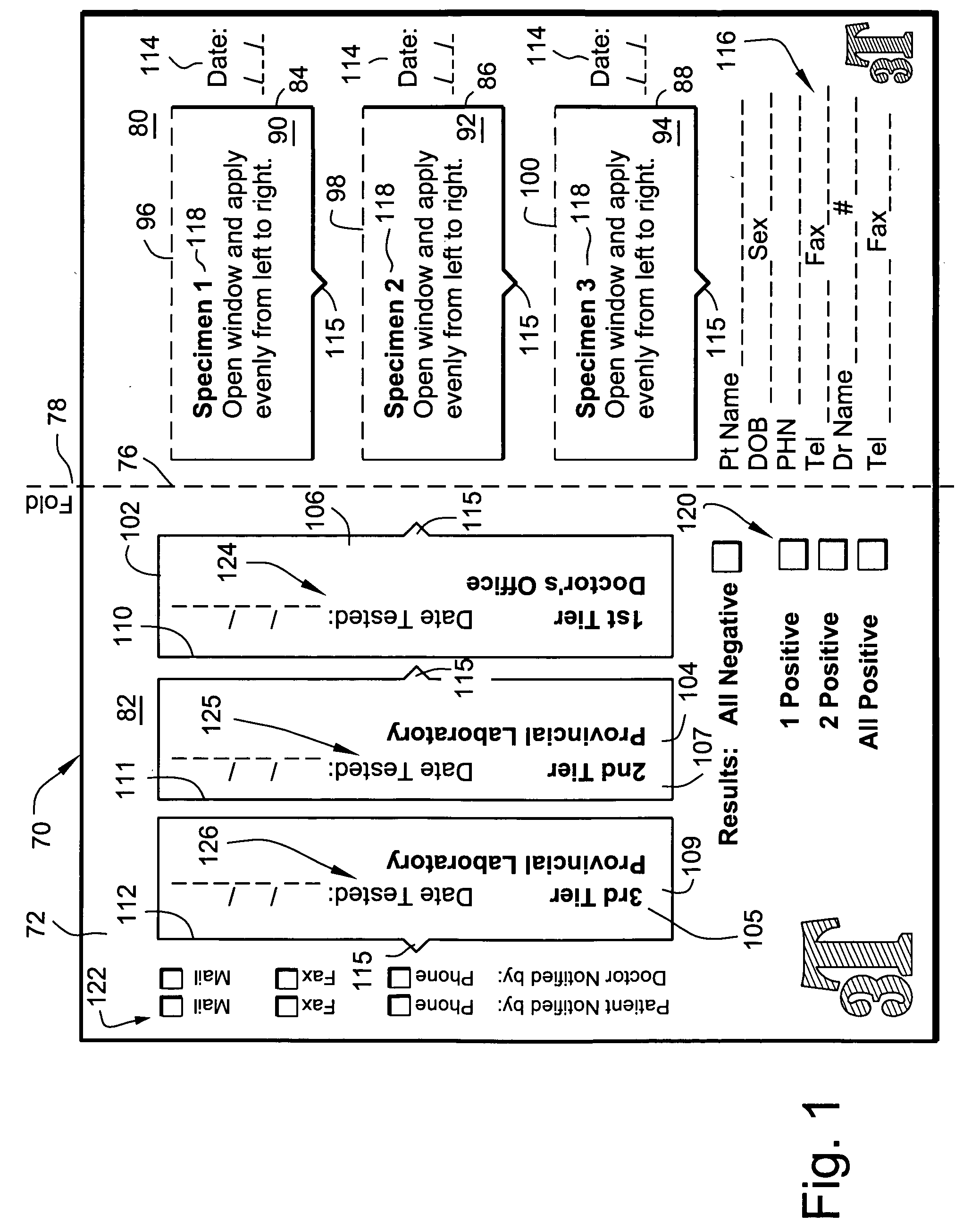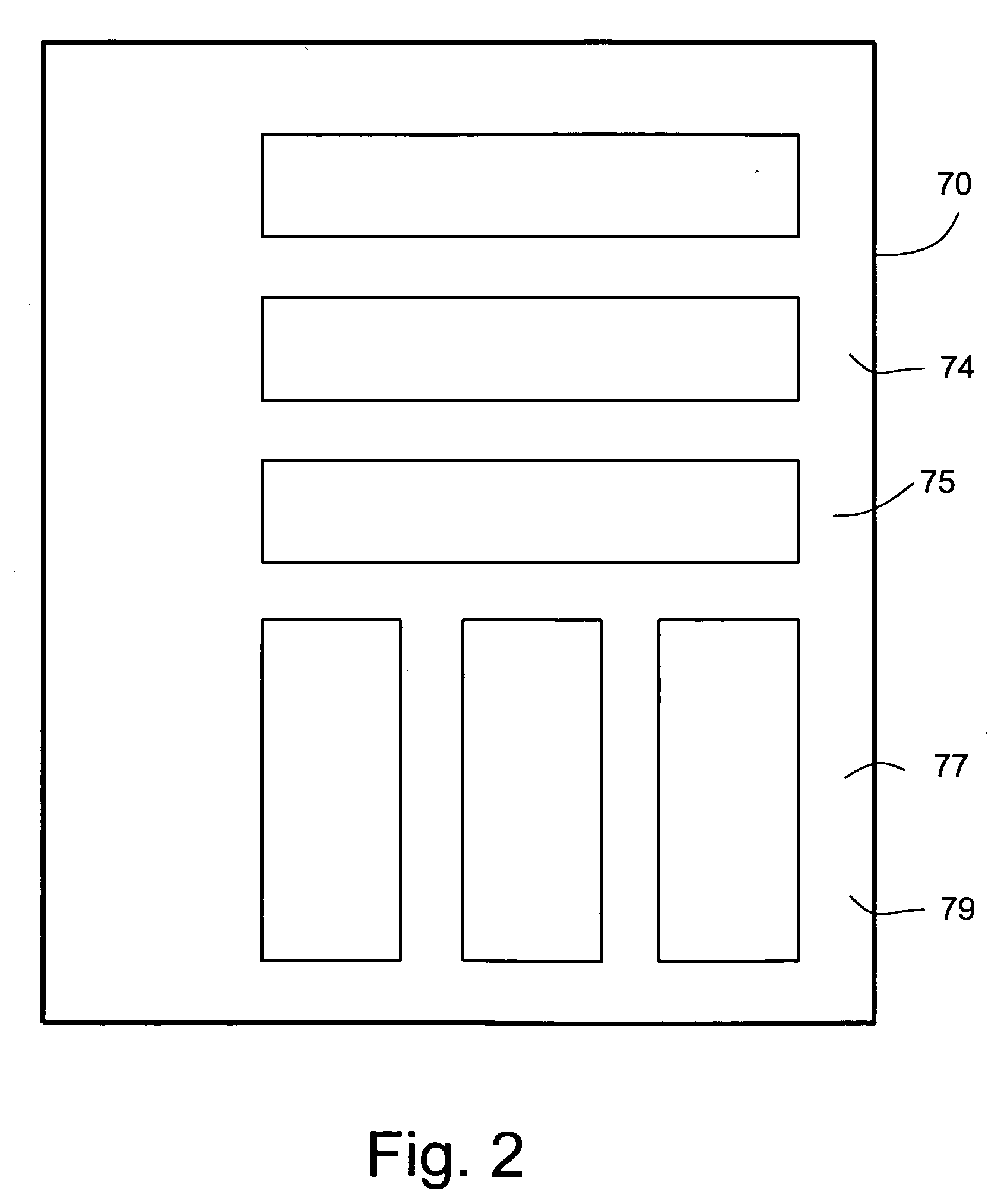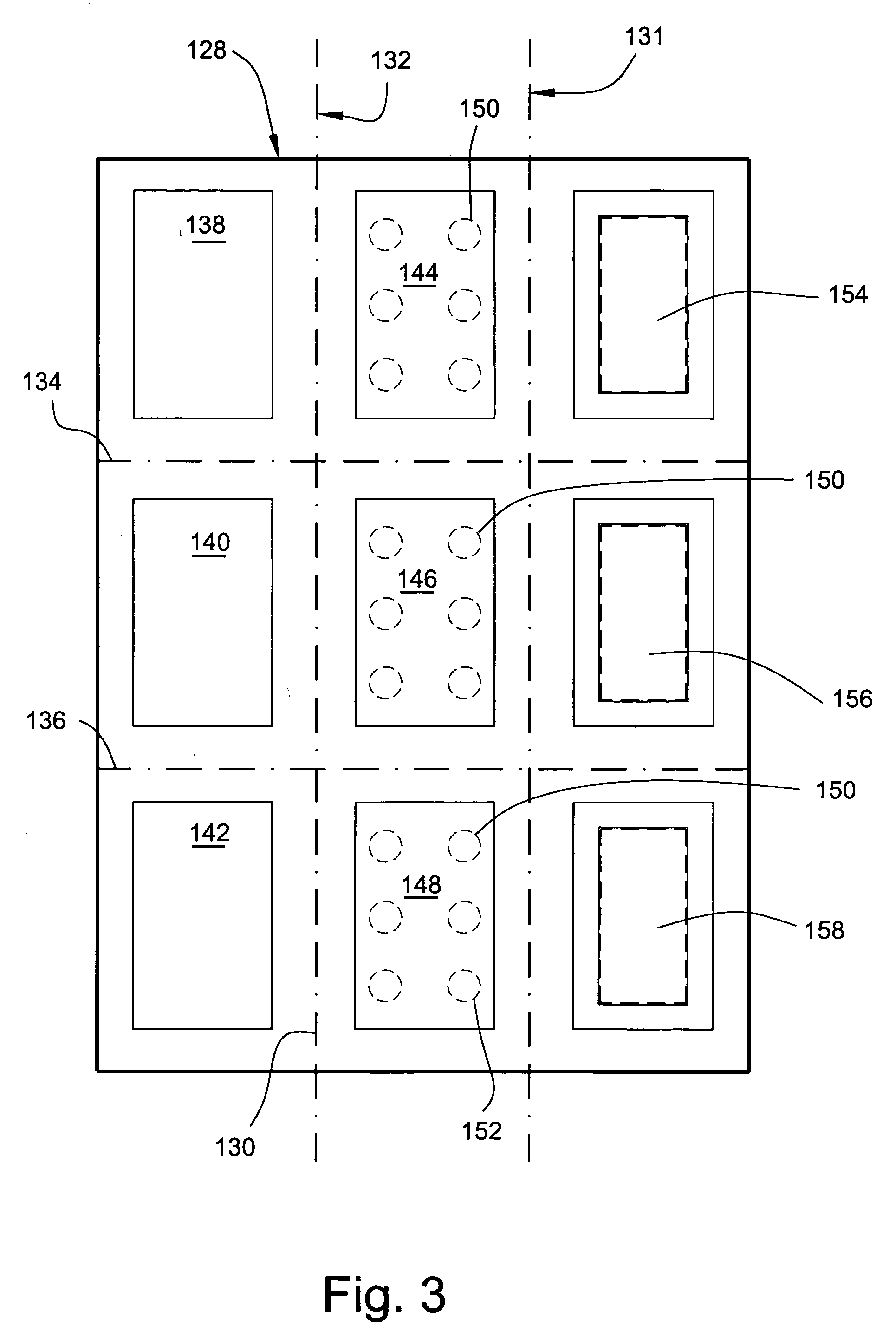[0011] In accordance with one aspect of the present invention, there is provided a testing device including a first panel with three apertures in the first panel; a second panel with three apertures in the second panel opposite the three apertures in the first panel; a sheet disposed between the first and second panels for receiving a specimen through the apertures, the sheet in the apertures in the first panel having first and second and third portions disposed about a
transverse axis of the apertures; first aperture covers mounted on the first panel and overlying the apertures in the first panel; second aperture covers mounted on the second panel and overlying the apertures in the second panel, the first and second aperture covers being movable independently of each other to
expose the first and second and third portions of the sheet. The first and second and third portions of the sheet are provided with indicating means for locating where specimen is to be placed on the sheet. The indicating means in the second portion is comprised of one or more zones which are removable from said sheet, and may be defined by perforations. The indicating means in the third portion is comprised of a zone which is also removable from the sheet typically by way of perforations and is impregnated with one or more compounds for preventing degradation of
DNA /
RNA in a sample applied to the third portion.
[0016] The sheet may be a single piece of paper, typically
filter paper, and may be provided with one or more hydrophobic dividing strips separating the first, second and third portions to prevent or minimize possible leakage of developing solution from the one portion to the other portions. Alternatively, the first, second and third portions may be comprised of three separate pieces of
filter paper each separated by a hydrophobic barrier. The
paper sheet may be impregnated with
reagent (e.g. guaiac) over the entire area thereof, or may be impregnated with
reagent (guaiac) only on the first portion and plain unimpregnated
filter paper for the second portion. The third portion is typically impregnated with a compound selected from pH buffers, antibiotic(s), a
disaccharide sugar (such as
Trehalose), a
drying agent, a
diffusion gel, antibodies to blood or
DNA /
RNA, and mixtures thereof. These compounds serve to stabilize
DNA /
RNA to reduce degeneration of the DNA / RNA.
[0021] A further preferred feature of the device is that sticking of the cover to the specimen is prevented by providing the inside surfaces of the respective aperture covers with a non-stick
coating. A typical example is a
wax layer.
[0022] The present invention enjoys numerous advantages. In particular, the device is embodied in one card which readily facilitates transference between the doctor and the patient and between the doctor and another testing location, such as a laboratory. The device is easy to use by the patient and is inexpensive to produce. A particularly important
advantage is that the device allows a first test to be carried out by the doctor and, in the event that a specimen is positive, or DNA / RNA testing is indicated for other reasons such as family history or
inflammatory bowel disease, subsequent testing can be carried out on the same specimen.
[0024] The third aperture consists of a high quality
cotton paper with certain additives present. In order to preserve the stool specimen, the pH should be maintained at around neutral, for example 6.5-7.5, typically about 7.0. This is accomplished by using pH buffered paper which has been impregnated with, for example, 50 ml 0.1
molar potassium dihydrogen
phosphate and 29.1 ml of 0.1
molar NaOH. In order to prevent bacterial destruction of the DNA / RNA, use of a solution of an antibiotic such as Flagyl in a
dilution 1:10−4 is used to impregnate the paper.
Cotton paper can be impregnated with
magnesium carbonate as a
drying agent. In order to preserve the DNA / RNA,
Trehalose, a
disaccharide sugar, in a
dilution 1:10−4 can be used to prevent the destruction of the DNA / RNA which occurs rapidly in untreated stool. The compounds allow for the protection and preservation of DNA / RNA for periods typically up to 11 years. The nature of the compounds varies, depending on whether the specimen is stool or other
biological fluid. For stool, the compound would for example include pH buffers, antibiotic(s), a
disaccharide sugar such as
Trehalose, a
diffusion gel, antibodies to blood or DNA / RNA and a
drying agent. The paper typically would be high quality cotton to facilitate DNA / RNA testing of the sample. The additives will vary depending on the source of the specimen, but for stool would include pH and osmolarity buffers, antibiotic(s) and a disaccharide sugar such as Trehalose.
[0025] If it were indicated to proceed with
a DNA / RNA test, the rectangular perforated area would be removed and an eluate obtained using
distilled water and buffers which would be used to look for DNA / RNA abnormalities. Examples of these abnormalities are
mutant K-ras, p53
tumor suppressor gene, BAT-26 micro
satellite instability marker, long DNA / RNA, APC (Adenomatous polyposis coli). The sensitivity of the current commercial version using whole stool is approximately 65% for Colo-rectal
Cancer (CRC), 30-40% for advanced adenomas, and there is a specificity of 95%. The use of the third aperture adds to conditions detected by a two aperture
system (two-tier test), since two entirely different methods of detecting
cancer and polyps are involved. Thus, the two tier test identifies about 3% of the screened group of patients who have bleeding in the stool, and this will detect about 90% of cancers and 70% of adenomas. The third aperture will typically detect about 65% of the colo-rectal cancers and 40% of polyps through the shedding of cancer cells and there will be an overlap in patients because the third aperture will detect some cancers and adenomas that are not bleeding at the time of testing. The high specificity of the second test will not add greatly to the 3% who require
colonoscopy. The net result is a test with high sensitivity and specificity which avoids unnecessary expensive and invasive tests as are carried out at present.
 Login to View More
Login to View More 


